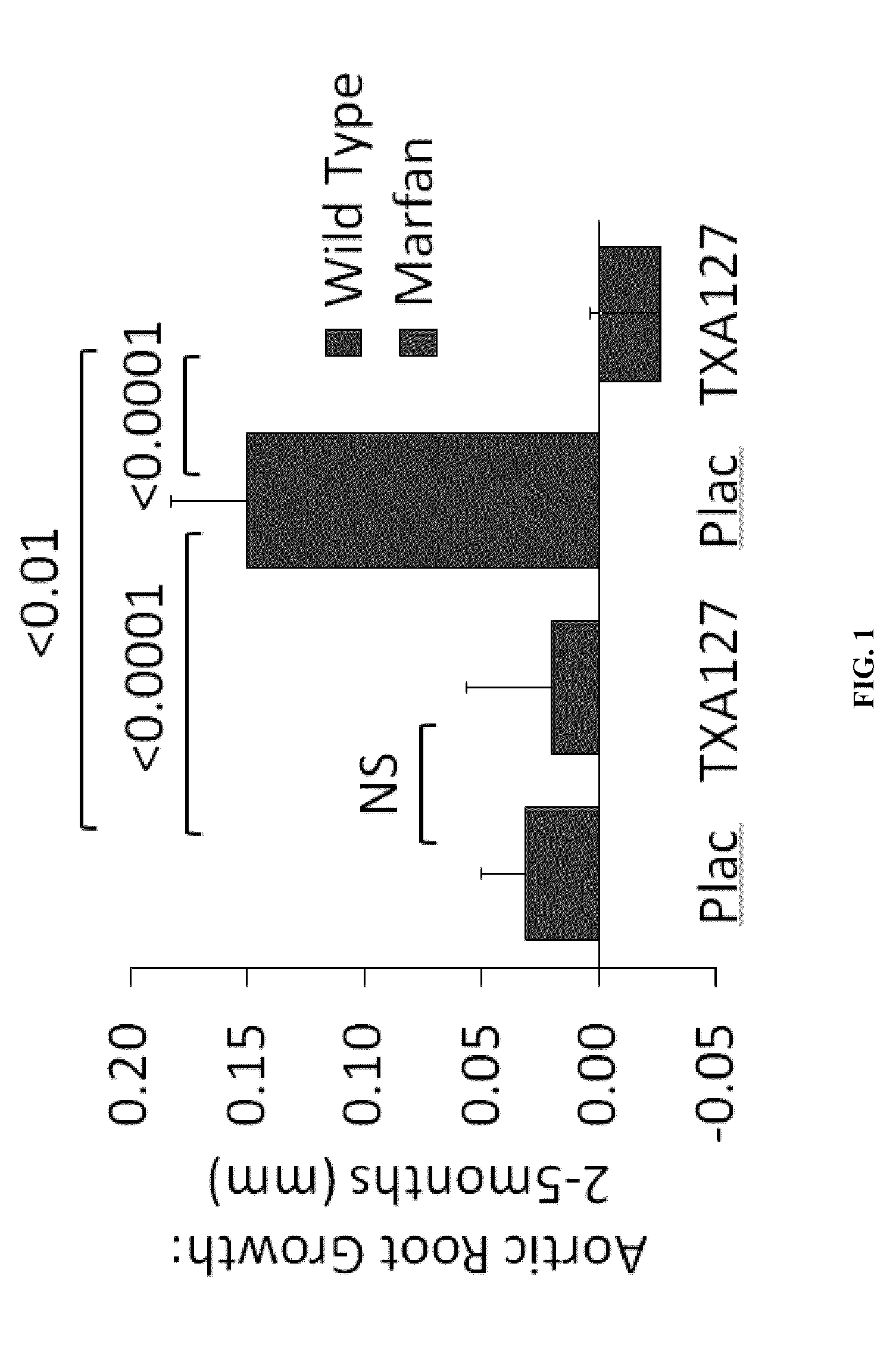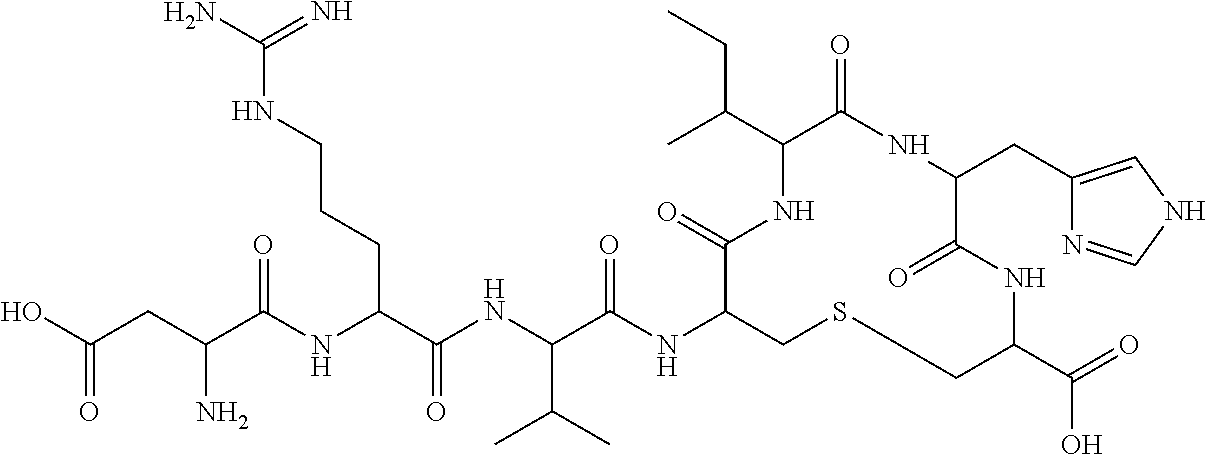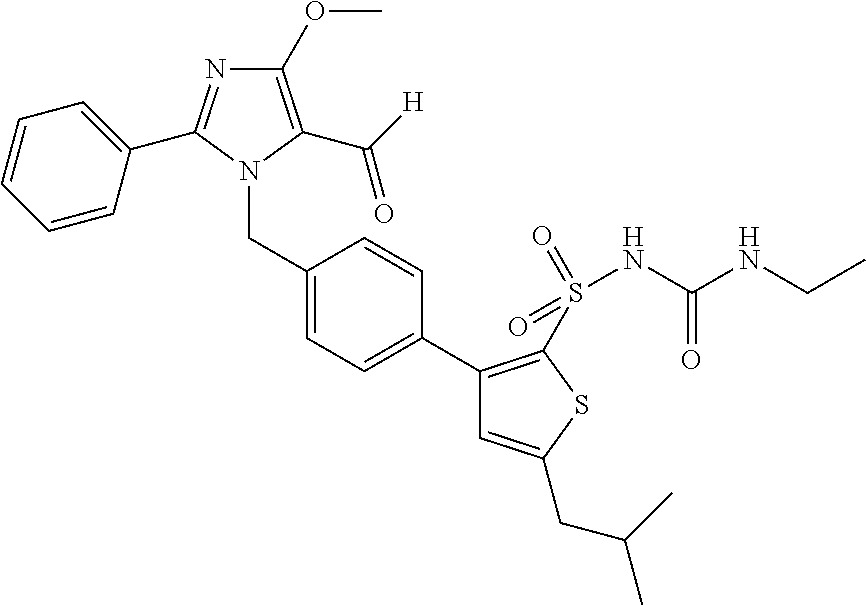Angiotensin peptides in treating marfan syndrome and related disorders
angiotensin peptide and marfan syndrome technology, applied in the direction of peptide/protein ingredients, drug compositions, biocides, etc., can solve the problems of limited treatment of marfan sufferers, death without rapid and invasive treatment, etc., and achieve serum stability and/or bioavailability, increase protease resistance, and the effect of increasing the resistan
- Summary
- Abstract
- Description
- Claims
- Application Information
AI Technical Summary
Benefits of technology
Problems solved by technology
Method used
Image
Examples
example 1
Angiotensin (1-7) Peptides in Decreasing Aortic Ring Dilation
[0238]In this Example, FBN1C1039G / + mice, a known and accepted model of Marfan Syndrome, are used to assess the effects of several angiotensin (1-7) peptides and an angiotensin (1-7) receptor agonist, AVE0991, on the aortic dilation typically seen in these mice. See, Xiong et al., Doxycycline delays aneurysm rupture in a mouse model of Marfan Syndrome, 2008, J. Vascular Surg 47:166-172. This mutation of the fibrillin-1 (FBN1) gene leads these mice to develop progressive aortic root dilation with sporadic aortic dissections throughout life, often leading to death.
[0239]In this example, three angiotensin (1-7) peptides, namely, TXA127 (SEQ ID NO:1), PanCyte (SEQ ID NO:22), and TXA301 (SEQ ID NO: 2) and a small molecule angiotensin (1-7) receptor agonist AVE0991 are used to examine their effect on the progression of aortic dilation over time. Specifically, 110 FBN1C1039G / + mice, (10 per group) are placed into one of the group...
example 2
TXA127 in Decreasing Aortic Aneurysm Growth
[0243]In this Example, the ability of TXA127 to attenuate aortic root growth typically observed in Marfan sufferers is described. Aortic root growth is one of the most serious, and often deadly, effects of the disease.
[0244]In this Example, a total of 20 mice were used, with 8 mice being wild-type and 12 being Fbn1C1039G+ mice, also referred to as “Marfan mice”, that are each homozygous for a fibrillin-1 (Fbn1) allele encoding a cysteine substitution, Cys1039Gly (C1039G), in an epidermal growth factor-like domain of Fbn1 (Fbn1C1039G / +).
[0245]The Fbn1C1039G mice are a well-accepted model of Marfan Syndrome and the Fbn1 mutation is the most common class of mutation causing Marfan Syndrome. Typically, the aortic root in Fbn1 C1039G mice undergoes progressive dilatation, evident as early as 2 weeks of age. By 7 weeks of age, the aortic root in the mutant mice is significantly larger than that in wild-type mice. This observed size difference gen...
PUM
| Property | Measurement | Unit |
|---|---|---|
| height | aaaaa | aaaaa |
| height | aaaaa | aaaaa |
| height | aaaaa | aaaaa |
Abstract
Description
Claims
Application Information
 Login to View More
Login to View More - R&D
- Intellectual Property
- Life Sciences
- Materials
- Tech Scout
- Unparalleled Data Quality
- Higher Quality Content
- 60% Fewer Hallucinations
Browse by: Latest US Patents, China's latest patents, Technical Efficacy Thesaurus, Application Domain, Technology Topic, Popular Technical Reports.
© 2025 PatSnap. All rights reserved.Legal|Privacy policy|Modern Slavery Act Transparency Statement|Sitemap|About US| Contact US: help@patsnap.com



